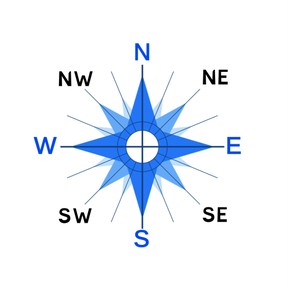
Intermediate directions (NE, SE, NW, SW)
I can identify and use intermediate directions to show location on maps.



8,000 schools use Gynzy
92,000 teachers use Gynzy
1,600,000 students use Gynzy
General
Students learn to identify intermediate directions and use them to locate places on a map.
Learning Objective
Students will be able to use a compass rose to identify cardinal and intermediate directions on maps and in their community.
Introduction
Students begin by playing a fun game of Simon Says. Explain the rules to students before playing. Then transition into how a compass rose shows direction. Explain the 4 cardinal directions and click the link to listen to a cardinal direction song. Students can also remember the saying, “Never Eat Soggy Waffles” to remember the cardinal directions.
Instruction
Introduce the intermediate directions and explain that they go between the cardinal directions. Explain that they can help you explain location more accurately. Using the compass rose on the board, have students drag the items to the correct place by following the directions provided. Have them practice again. For example, students will drag the dog so that it is SW of the tree house. After this, students will observe two maps and answer questions about the locations of different items.
Quiz
Check student understanding with ten true or false and multiple-choice questions. Students will be shown a map and they must answer questions about the location of different items on the map. For example, “What animals are southwest of the giraffes?”
Closing
To conclude, students will drag to label the compass rose on the board. Then have students stand up and get them moving around the classroom. Place labels on each wall of the classroom with the 4 different cardinal directions. Have students move around the room by giving them instructions like, “Take 2 steps northeast.”
The online teaching platform for interactive whiteboards and displays in schools
Save time building lessons
Manage the classroom more efficiently
Increase student engagement
Discover more!
About Gynzy
Gynzy is an online teaching platform for interactive whiteboards and displays in schools.
With a focus on elementary education, Gynzy’s Whiteboard, digital tools, and activities make it easy for teachers to save time building lessons, increase student engagement, and make classroom management more efficient.



